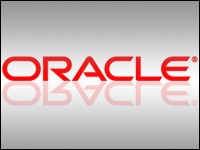
Oracle has released the third in a series of small, plug-and-play Web 2.0 tools designed to enhance specific features of its customer relationship management platform.
Oracle Sales Prospector, previewed Monday at the Enterprise 2.0 conference in Boston, recommends prospective leads, rating the likelihood those leads will close, and then aggregates the data in a single repository so that sales reps can benefit from shared information.
Building Up a Base
The system trolls for prospective leads by searching both internal and public information sources to identify potential references and analyze their purchase probability. It uses analytics to evaluate the purchase histories of companies with similar profiles.
In addition to recommending organizations based on buying potential, the system projects revenue, close probability and time to close for each deal under analysis. Centralized in one repository, the data can be accessed by other sales reps, who can then compare their pending deals with similar, successful deals and gain insights into how they closed. The system improves as more data is entered.
Delivered as Software as a Service, Oracle Sales Prospector is built on open standards, including Oracle Fusion Middleware. It can be used as a standalone application or together with Siebel CRM, Oracle CRM On Demand, the Oracle E-Business Suite or SAP.
Consumer-Like Feel
Sales Prospector is one of a handful of next-gen CRM applications Oracle has released in recent months that use a Web 2.0 approach to address a certain pain point — like finding good sales leads, said Sheryl Kingstone, director of Yankee Group’s enterprise research group.
Initially Oracle called them “mini apps,” but that’s a misnomer, she told CRM Buyer. “These have been built from the ground up to be Web 2.0-centric and to have a consumer-like feel.”
So, instead of rolling out an enhanced sales force automation application, Oracle has introduced a sales assistance mini-application for the mobile environment, a deal management mini-application, and now a sales prospector mini-application.
In March, Oracle made a big play to address corporate demand for Web 2.0-CRM functionality with the rollout of version 15 of its On Demand application. For the first time, Oracle CRM users were able to embed application pieces, or portlets — such as a contact management list — on a variety of media, including a BlackBerry device or iGoogle homepage.
Also new was the incorporation of a social networking-type function called “sticky notes” around a specific opportunity or event.
From Driving Directions to Deal Making
Accompanying the version 15 release was Oracle Mobile Sales Assistant, a mobile app add-on with features designed to make life easier for the road warrior — getting driving directions to an appointment via PIM (personal information management), for example.
Oracle introduced Deal Management in April at a trade show in Denver. This tool helps sales professionals identify and negotiate the most profitable price during the deal process. Its workbench analyzes deal histories and uses embedded analytics along with past and real-time market metrics to model scenarios during negotiations.
It also shows relevant deals within a market segment, giving sales people data about similar deals broken down by actual cost, impact to margin or other comparisons.
“The CRM industry always has viewed the phase between quote opportunity and the order as a linear transaction,” Anthony Lye, senior vice president of CRM at Oracle, told CRM Buyer in an earlier interview discussing Deal Management.
“But in reality,” he noted, “there is a lot of non-linear negotiating going on.”
There are pricing applications on the market that are highly sophisticated, Lye acknowledged, but “this is not one of them. We wanted to go at this problem from the workflow and analytics perspective to enable sales people to make better decisions.”





















































